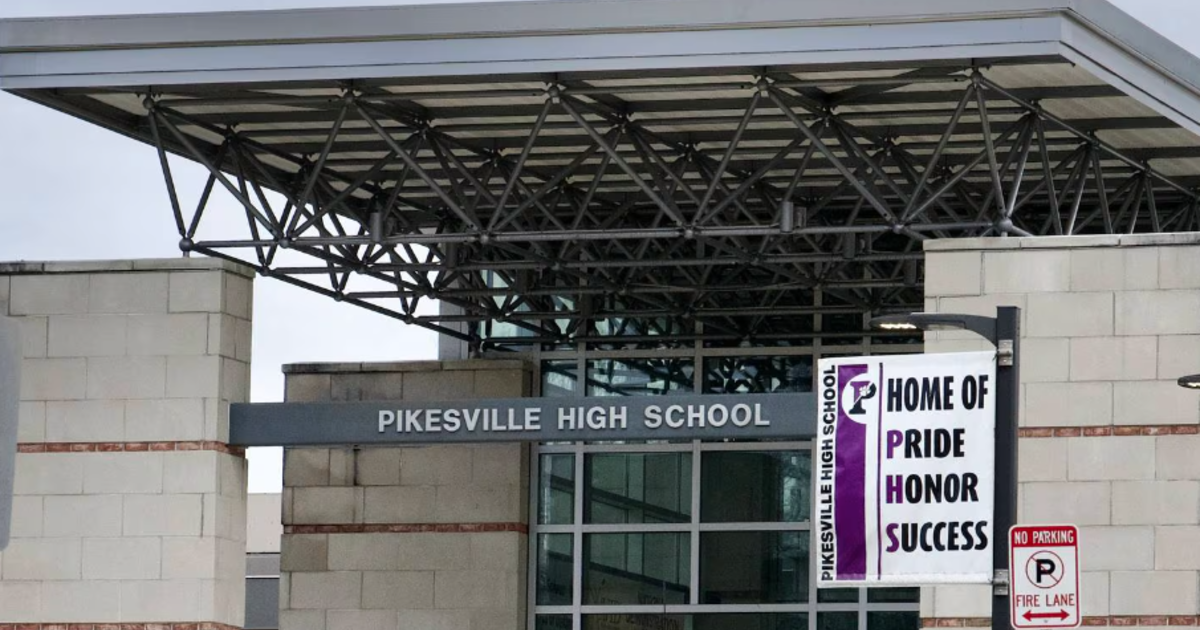Baltimore County Submits Council Redistricting Map, But Critics Say New Proposal Doesn't Address Civil Rights Concerns
BALTIMORE (WJZ) -- The Baltimore County Council on Tuesday night submitted new court-ordered boundaries for its seven councilmanic districts, but critics who sued the county over an earlier proposal, alleging it was biased, say the map does not address their concerns about representation for voters of color.
According to revisions provided by the council, District 2, which includes communities just beyond the northwest borders of Baltimore City, and District 4, along the Liberty Road corridor in the western part of the county, would have majority-minority voting populations.
Only District 4 would have a majority of Black voters, at 61.12%.
District 1, located in the southwest portion of the county, stretching from I-70 to I-95, would be almost evenly split, with non-white voters having a slim majority of the vote. Broken down by race, white voters would have a 49.87% plurality. Black voters would represent 27.39% of the voting population, and Asian Americans would have an 11.16% share of the vote.
Districts 3, 5, 6 and 7 would be majority white.
According to the county, white voters represent 55.12% of the population, compared with Blacks at 28.62%, Asian Americans at 6.29% and Hispanics at 5.99%. People who identify as being part of two or more races account for 3.27% of the voting population and residents whose race falls under "other" are 0.44%. Native Americans and Pacific Islanders are 0.24% and 0.03% of the voting population, respectively.
When you factor in children, whites are only a slim majority of county residents, at 51.2%, and 48.19% of all county residents are non-white, with nearly 30% of the population being Black.
A coalition of groups, including the ACLU of Maryland, the Baltimore County branch of the NAACP, the League of Women Voters of Baltimore County, sued the county late last year, alleging an earlier proposal only included one district where Blacks would make up a majority of voters.
"Baltimore County has a long and disgraceful history of discrimination against Black and BIPOC residents, evident in pervasive segregation and unequal access to education, employment, and housing," the plaintiffs charged in the lawsuit. "This history of discrimination has gone hand in hand with Baltimore County's exclusion of Black and BIPOC residents from participating fully in electoral politics."
In February, a federal judge threw the map out and ordered the county to draw new districts that comply with the Voting Rights Act.
Baltimore County Council Chairman Julian E. Jones Jr., the legislative body's sole Black member, said Tuesday night the new boundaries comply with U.S. District Judge Judge Lydia Kay Griggsby's order.
"As was the case when we adopted a Redistricting Plan last December, this has been a very difficult process and we considered a number of mapping scenarios in trying to achieve a Map in which the Council could reach a consensus and that would stay true to traditional and legal redistricting principles of compact and contiguous districts with substantially equal populations; recognizing the importance of keeping communities intact; and providing more opportunity for Black voters in the County to elect representatives of their choice," he said. "We have done that with this Map."
Jones noted the seat in majority-minority District 1 is open with Councilman Tom Quirk, who is white, not seeking reelection.
District 2, which Jones said "is now majority-minority" and has a greater share of Black voters, is currently represented by Councilman Israel "Izzy" Patoka.
Jones represents District 4.
But critics of the map, including some of the plaintiffs in the lawsuit, raised concerns about the final results, and some questioned why the new map came in late Tuesday night -- the end of the deadline established by Judge Griggsby.
The League of Women Voters of Baltimore County said the new district fail to "address the problem," with there still only being one majority Black district.
"[Baltimore] County argues that another district with a white plurality will provide Black candidates more opportunity," the group tweeted. "The data doesn't support this. Black candidates are elected in majority Black districts. White plurality districts such as [District] 1, have never elected Black candidates."
Allies For Democracy claimed the biggest difference between the two maps was the "lightly redrawn" District 2, in which 41.22% of the voting population and 41.33% of the overall population is black.
"Last we checked, 40% is not a 'majority,'" the group tweeted.



